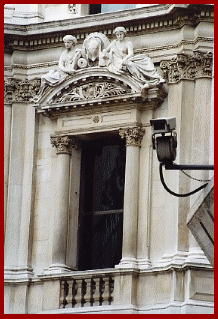| ||||||||||||||||||||||||||||||
Welcome to the | ||||||||||||||||||||||||||||||
 | ||||||||||||||||||||||||||||||
 | ||||||||||||||||||||||||||||||
The complete A to Z ... | ||||||||||||||||||||||||||||||
Short of using two baked bean tins and a piece of string (would it work?) we’ve pretty much explored the basics for all the main types of video signal transmission systems. There are however a few additional techniques, which may on occasions be required to deal with .... the unexpected. The first and perhaps most obvious way of exploiting the capabilities of an expensive transmission infrastructure, is to double or quadruple its capacity. Whilst it’s already been mentioned that ‘multiplexing’ more than one signal down a fibre optic cable, is almost standard practice, on some of the narrower ‘bandwidth’ techniques, such as microwave or laserlink, it is still a useful way of reducing the number of links that are required. If you consider that in a major installation such as a Town Centre project, rather than linking each individual camera back to the control room using a seperate link, a ‘hub’ of perhaps eight cameras could be relayed using just two seperate channels, with one carrying the multiplexed signal (eight pictures displayed & all recorded to tape / HDD) and the other being used as a ‘SPOT’ select display. In this way, you can choose which of the available cameras you wish to select for ‘real time’ display, and in an emergency situation, there is still the option of using the multiplex configured channel as a second ‘SPOT’ facility. So you can realistically have between four and sixteen cameras utilising just two real time video links, at a fraction of the cost, and whilst still maintaining a reasonable level of display flexibility! One rather obscure transmission technique which is rarely used, allows for a video signal to be transmitted using a buildings existing mains cables. By plugging in a transmitter and receiver unit using any of the available power points on the same circuit, pictures can be transmitted from one location, and recovered elsewhere without any risk of accidental interception. A word of caution though; if you want to use this technique, make sure you obtain the correct equipment, and kids .... don't try this at home! | ||||||||||||||||||||||||||||||
 | ||||||||||||||||||||||||||||||
IMPORTANT: No material may be reproduced, copied or redistributed from this site, © doktorjon.co.uk 2004 - 2008 Homepage...:...Gateway...:...Technical Gateway....:....Quickfind Index....:....Equipment Directory | ||||||||||||||||||||||||||||||

